Karuizawa on Culture Day (2)
I came to Oiwake, Karuizawa.
There are two museums in Oiwake: the Hori Tatsuo Museum of Literature and the Karuizawa Oiwakejuku Museum of Local History. I decided to visit the Hori Tatsuo Museum first.
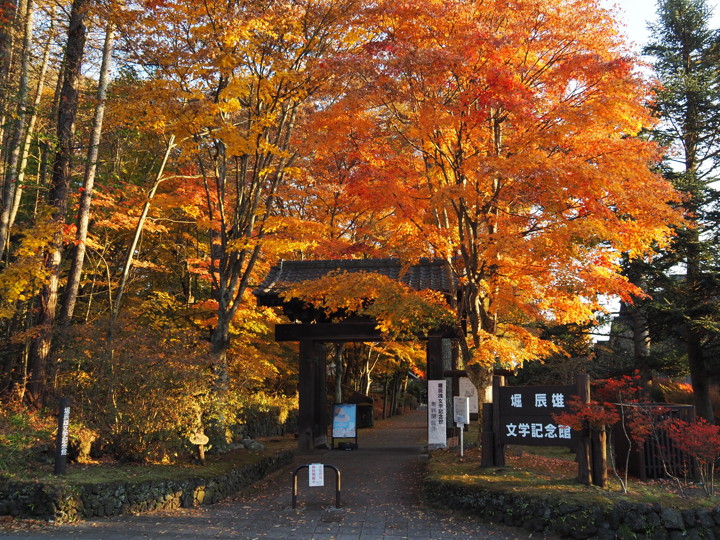
When I came to the entrance, I was amazed at the beautiful autumn and yellow leaves. They were shining in the afternoon sun.
The writer Tatsuo Hori had visited Karuizawa every year since his youth, and settled in Oiwake in 1944, where he died in 1953 at the age of 49.
The museum was built on the site of his former house and opened in 1993. It includes the house where he spent his later years, a library, an annex where his wife Taeko lived for a long time, and the main building where books and other materials are stored and exhibited.
To my surprise, there is an indication that photography is allowed in the exhibition room.
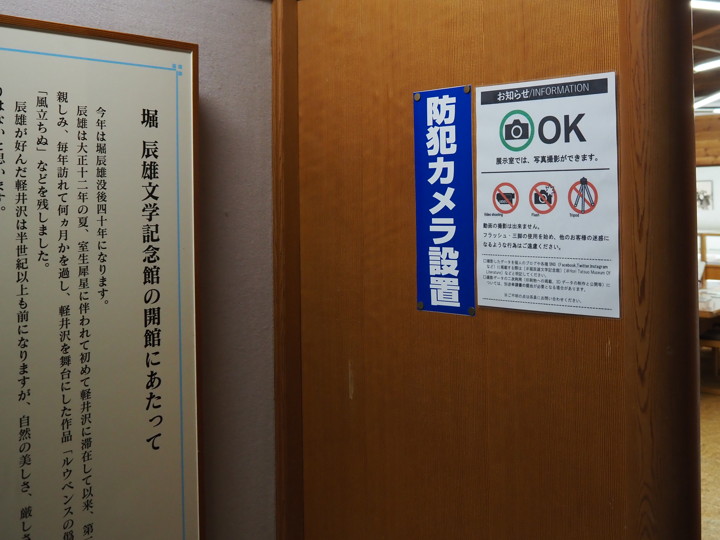
Therefore, I took pictures inside the exhibition room.
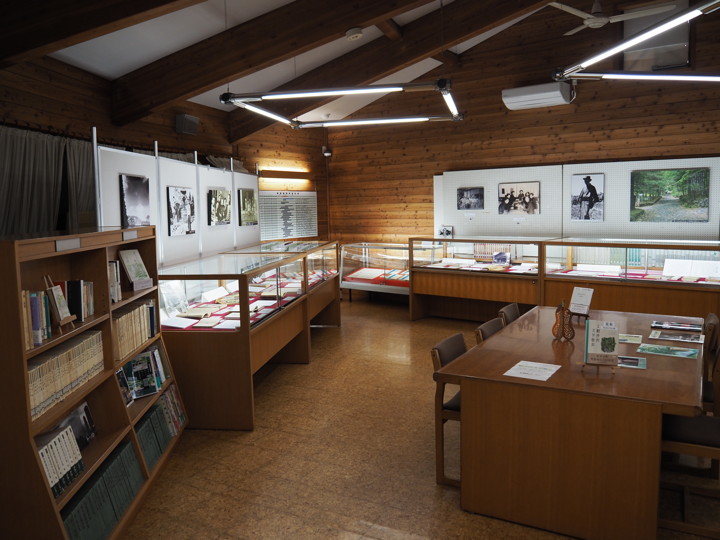
The December 1936 issue of the magazine “Kaizo" in which “The Wind Has Risen" appeared, the Shinchosha edition published in 1937, and the Noda Shobo edition published in 1938 are displayed side by side.
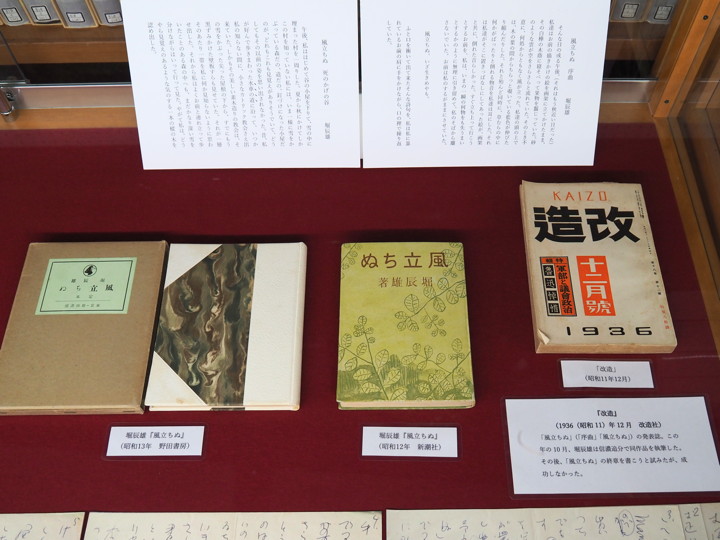
A map of Karuizawa related to Tatsuo Hori is also displayed. (The photo is a part of the map.)
I found the location of the Karuizawa Sanatorium that I wrote about in my previous article.
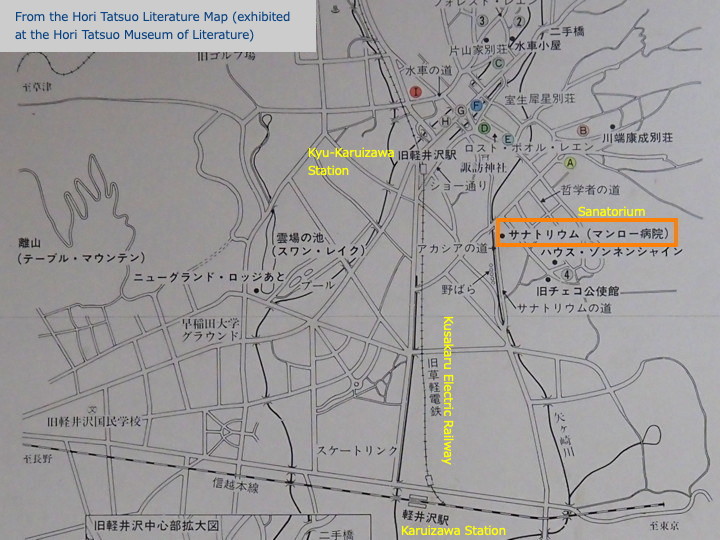
After leaving the exhibition room, turn to the south and we will see the former Tatsuo Hori’s house.
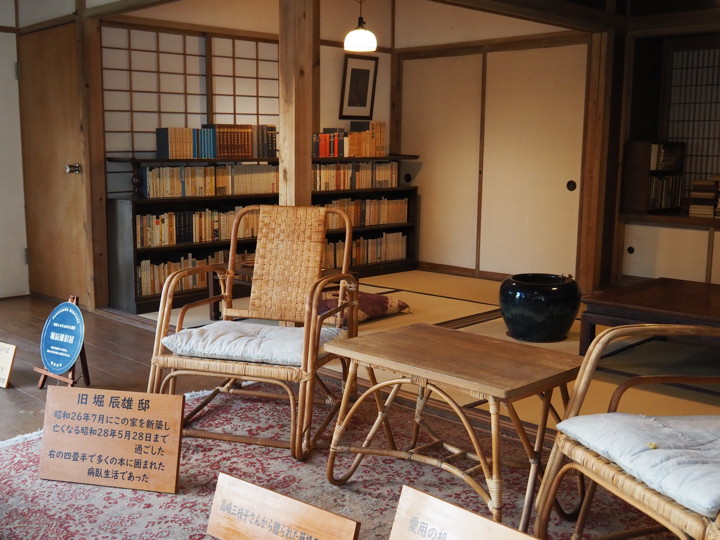
The explanatory plaque reads as follows.
“Former Tatsuo Hori’s house: This house was newly built in July 1951, and he lived there until his death on May 28, 1953. He lived in a room of the 4 tatami and a half on the right side of the house, surrounded by many books, while lying in bed.“
In front of the house stands a library, and there is an explanatory board there as well.
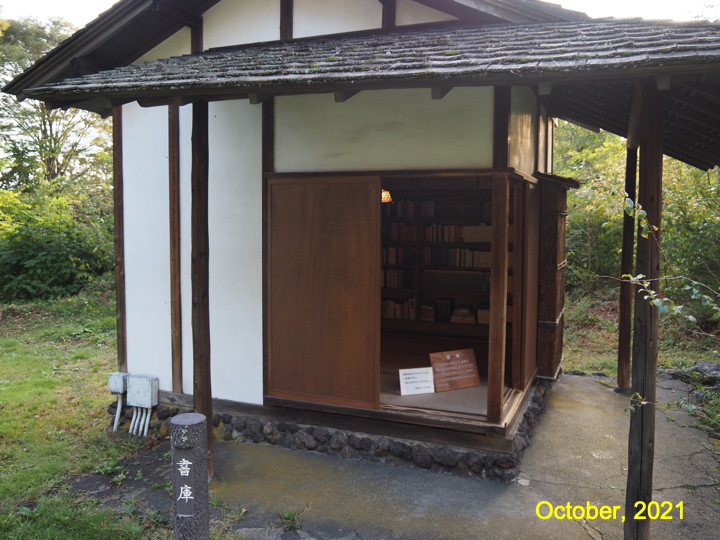
“The Library: He was anxiously awaiting the completion of the library, and even instructed his wife on how to arrange the books in the library on his sickbed. The library was finished ten days before his death, but he could not see the books lined up there."
(Actually, I did not take a picture of the library at this time because other visitors were looking at them intently. So I used the photo I had taken earlier only of the library).
[Postscript] (2023.12.26)
The above text was transcribed from a photograph taken two years ago, but when I visited the museum again the other day, I found that the text was different. The following is the text of the current exhibit.
'The library, which he had built to house his many books, was completed 10 days before his death, but he never saw it filled with books. Before his death, he looked at the library through a hand mirror from his bed and looked forward to its completion with great anticipation.’
(End of Postscript)
I left the museum to go to the next place.
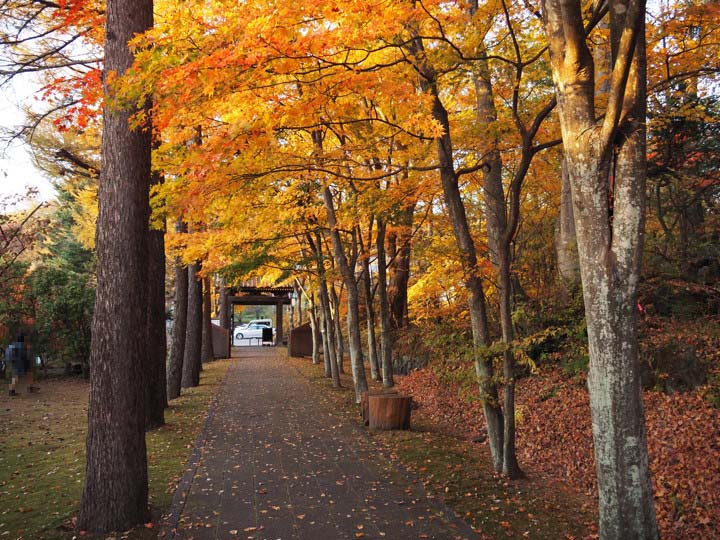
By the way, what is the origin of the large gate at the entrance?
An explanatory board stood on the right side of the gate. (at the arrow).
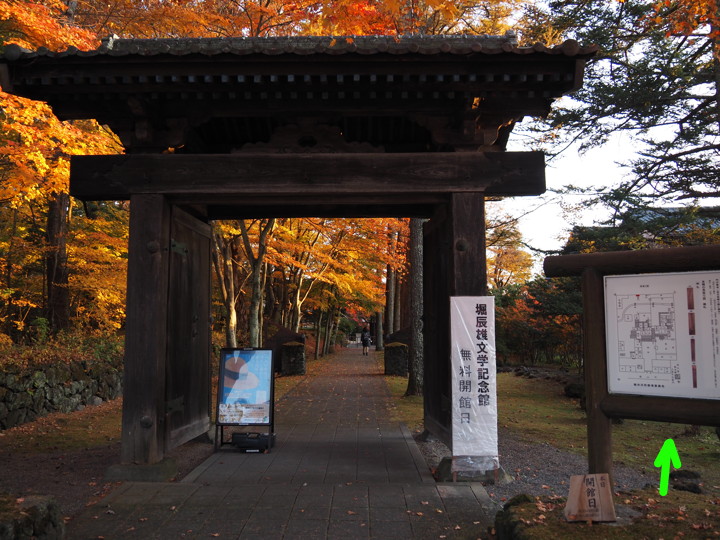
According to it, this gate used to be the back gate of the Honjin (the lodgings such as daimyos) of Oiwake-juku.
Oiwake-juku flourished in the Edo period, and the Honjin was used as a traveling post when the Meiji Emperor made his Hokuriku pilgrimage in 1878, but lost its function as an inn after the Shinetsu Line was opened.
This back gate was moved to the Uchibori family in Shiono, Miyota Town (then Onuma Village) at the end of the Meiji era (about 1900s), and was carefully used as their front gate.
It was donated to the Karuizawa Town in 2005 because it is a historical heritage for the Town.
However, the “Karuizawa web" also provides a few more details.
The residents thought that the site of the Honjin would be the best place to relocate. But the landowner refused the relocation of the gate.
The town and the residents could not decide where to build it because of conflicting opinions: “It should be in a place where Nakasendo can be seen" or “No, it would be deserted if there was nothing even after passing through the gate.
In such a situation, the Hori Tatsuo Museum of Literature was chosen because it is located along the Nakasendo Road, is a tourist attraction, and is on land owned by the town.
In fact, Mrs. Taeko did not want to build it, but she could not refuse.
This article asks for a reconsideration of whether this is really the right place.
(The above is based on the Karuizawa web article, “Why is the gate of the main camp located in front of the Hori Tatsuo Literature Memorial Museum?" (on September 13, 2016, written in Japanese.)
I would give more credit to the Uchibori family, though, who have kept the gate in their home for almost a hundred years.
It says the gate was built in Tempo 2, or 1831.
Since it was moved at the end of the Meiji period (1868-1912), let us assume that it was moved in 1910. And it was moved back to the town in 2005.
It has been in Oiwake for 80 years, and in Uchibori’s house for 95 years. It may also be a question of how these years are viewed as 'history’.
Of course, if we add the years after 2005, the number of years in Oiwake is longer, but what is the “meaning of being in this place"?
Well, I am an outsider, so I will stop here to express my opinion. I will leave the rest to the residents of Oiwake.
***
Ah, it’s almost 4:30. Time is running out, so I have to move on.
I went to the last stop, Oiwakejuku Museum of Local History.
I made it just in time.
But I was in a hurry, so I couldn’t take a picture of the building. So I used this photo that I had taken before.
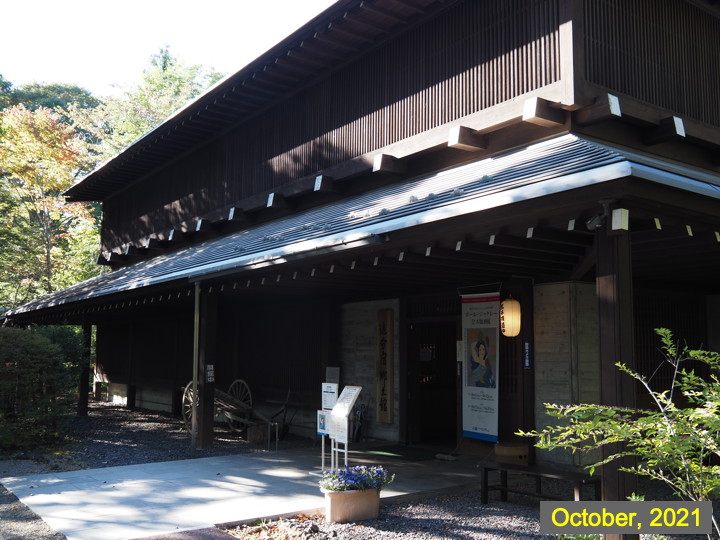
The stamp rally was conducted with this paper. Each museum had its own stamp. This was the end of the stamp rally.
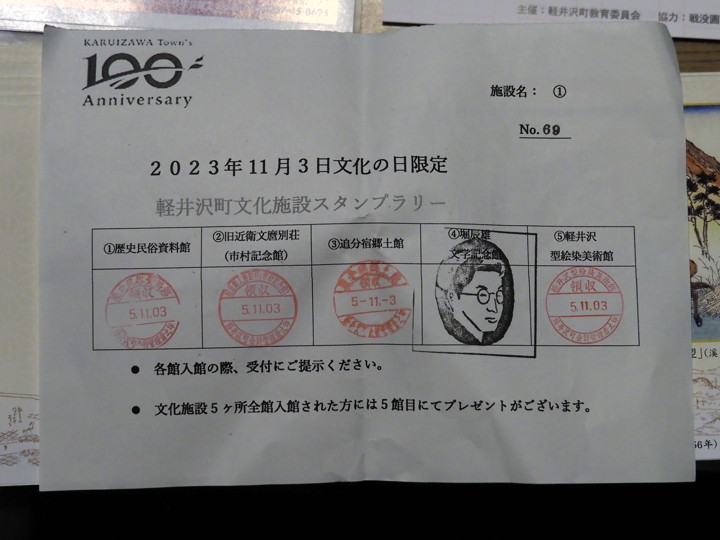
In exchange for this paper, I received a commemorative gift. It was a slim bottle commemorating the 100th anniversary of the town’s establishment.
I think the stamp rally was held only this year because of the 100th anniversary.
Looking at it again, it is interesting that only the Hori Tatsuo Museum uses a rubber stamp of the portrait.
The museum staff advised me if you would like to take a picture of the stamp rally form, as the form was collected in exchange for the souvenir. So I was able to keep this photo.
It was a fun day, and I learned many new things.
…No, I am not done yet.
I am still going to tour this museum.
The last time I was here was for the Paul Jacoulet exhibition, so the museum looks different from that time.
While looking at the exhibits, I made a “discovery(?)"
(to be continued)
[Related articles]
'Karuizawa on Culture Day (3)' (2023.12.27)
'Karuizawa on Culture Day (1)' (2023.12.12)
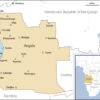
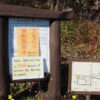

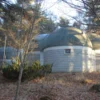
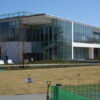
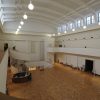
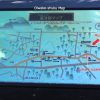
Discussion
New Comments
No comments yet. Be the first one!